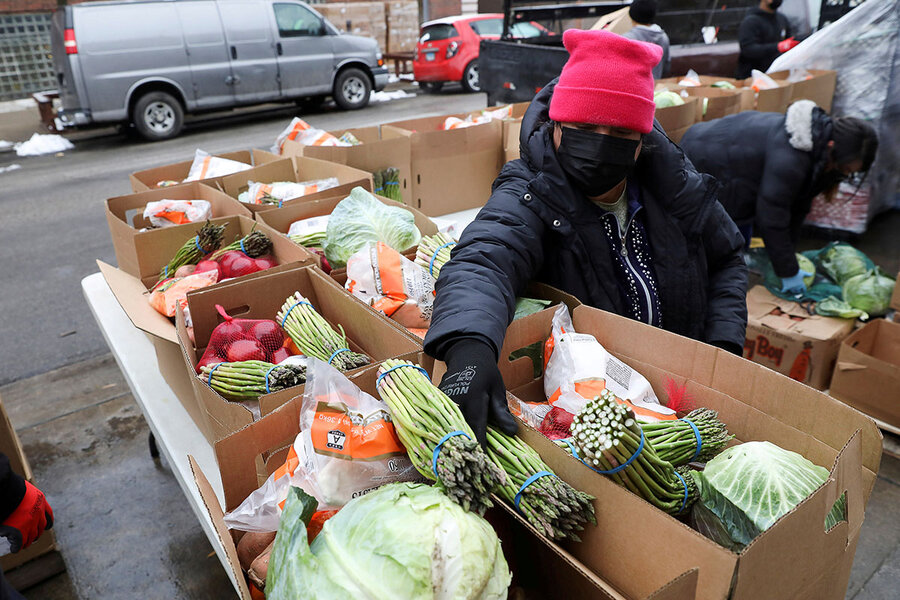Why are so many people hungry in America?
Loading...
When the Monitor’s intern team set out to report on rising hunger in the United States, it was audio intern Ibrahim Onafeko who crystallized our focus with a single provocative question. “I wondered, in the land of plenty, why are so many people hungry in America?” he says. “I wanted to figure out why conventional approaches to solving hunger haven’t been working.”
In short, there are no easy answers. Definitions of who qualifies for food assistance and best practices to get food to those who need it are constantly shifting. So our team homed in on new relationships and signs of policy changes that could bring added efficiency to hunger relief efforts. In one welcome shift, it appears that the surge in need during the pandemic may have helped to ease stigma around food assistance.
Public schools quickly offered frontline help for meal support. “The pandemic turned schools into places for all families, regardless of whether they have kids enrolled or not, to pick up free food,” says intern Nick Roll, who adds he was moved by the commitment of cafeteria workers. “I realized just how invested they were in the outcomes of the children they serve, and how much they want to fix the shortcomings in the current system.”
At the grassroots level, neighbors stocked community fridges with free food. With greater involvement came opportunities to learn about each other. “Many of the families who were receiving meals from Mark Bucher’s Feed the Fridge program in Washington, D.C., were Muslim,” says Erika Page, another member of the intern team. “So they asked that pork not be included, and Feed the Fridge changed up its recipes.”
The road from farm to food pantry also shortened. Intern Connie Foong visited a fourth-generation dairy farm in New York that got a boost from new state and federal programs that deliver excess produce to urban centers, ensuring small farms – for now – can survive. Farmer Rick Osofsky regaled Connie and staff photographer Melanie Stetson Freeman with the ups and downs of farming as he stopped to pat the cows. “Through it all, his love for the work underscores every word and action,” says Connie.
Food has long served as a vehicle for connectedness and care that has drawn families, communities, and cultures together. And, as our series shows, that recipe will likely be baked into any lasting solutions to hunger.
This column first appeared in the May 10 edition of the Monitor Weekly magazine as part of the Hunger in America series.
Part 1: Who is hungry in America? The pandemic has changed the answer.
Part 2: Pandemic food lesson: Match struggling farms with hungry people
Part 3: Should school lunches be free for all? A pandemic experiment.
Part 4: Neighbors feeding neighbors: Community fridges strengthen ties
Part 5: For the newly food insecure, help that preserves dignity






